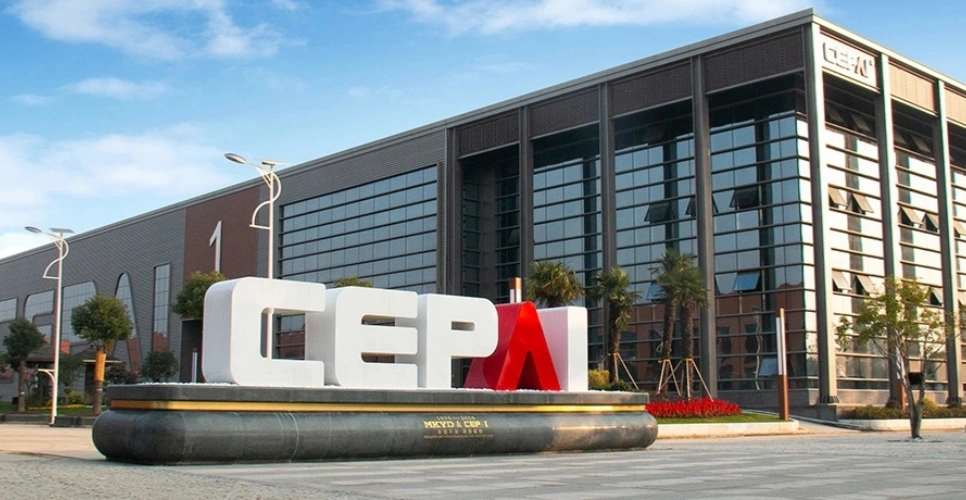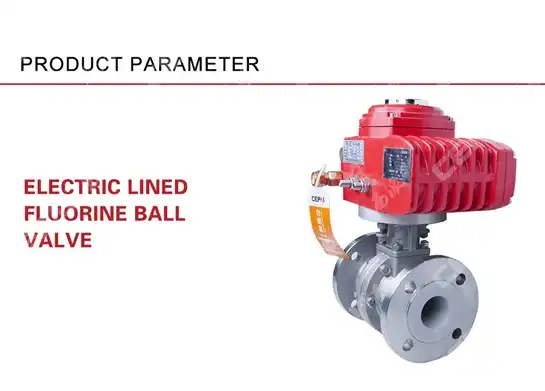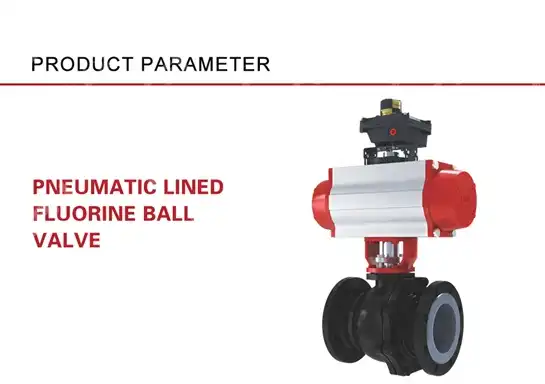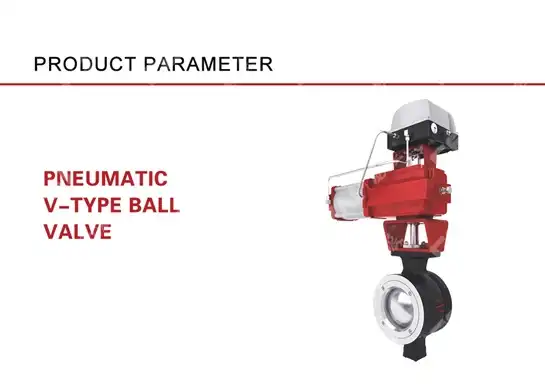The Top Electric Ball Valves for Precise Control
Industrial operations worldwide face a critical challenge: achieving precise flow control while maintaining operational efficiency and safety standards. When system downtime costs thousands per hour and imprecise flow regulation can compromise entire production processes, selecting the right Electric Ball Valve becomes paramount. The Top Electric Ball Valves for Precise Control represent the pinnacle of fluid automation technology, combining advanced actuator systems with precision-engineered valve bodies to deliver unmatched performance in demanding industrial environments. These sophisticated control solutions address the pressing need for reliable, accurate, and responsive flow management across petrochemical, power generation, and process manufacturing industries.
Understanding Electric Ball Valve Technology for Optimal Performance
Electric Ball Valve technology represents a revolutionary advancement in automated flow control systems, providing unprecedented precision and reliability for industrial applications. These advanced valves integrate sophisticated electric actuators with precisely machined ball valve bodies, creating a seamless control solution that responds instantly to system demands. The electric actuator component utilizes advanced servo motor technology coupled with precise positioning systems, enabling accurate flow regulation with minimal deviation from setpoint parameters. Modern Electric Ball Valve systems feature intelligent control algorithms that continuously monitor valve position, flow rates, and system pressures to maintain optimal performance characteristics. The integration of digital control systems allows for remote operation capabilities, real-time diagnostics, and predictive maintenance scheduling. These valves excel in applications requiring frequent cycling, precise positioning, and consistent repeatability, making them indispensable for automated process control systems.

-
Key Components and Design Features
The fundamental architecture of top-tier Electric Ball Valve assemblies incorporates several critical components that ensure exceptional performance and longevity. The electric actuator housing contains precision-engineered gear trains that multiply torque output while maintaining positional accuracy. Advanced position feedback systems, typically utilizing potentiometers or optical encoders, provide continuous position monitoring with resolution capabilities exceeding 0.1% of full stroke. Valve body construction utilizes high-grade materials such as stainless steel grades 316L and duplex alloys, providing superior corrosion resistance and mechanical strength. The ball element features precision-machined flow ports that maintain consistent flow characteristics throughout the valve's operational range. Advanced sealing systems incorporate PTFE-based compounds and elastomeric materials engineered to withstand extreme temperatures and aggressive chemical environments.
Electric Ball Valve Applications Across Critical Industries
Industrial applications for Electric Ball Valve systems span numerous critical sectors where precision flow control directly impacts operational efficiency and safety. Petrochemical processing facilities rely heavily on these valves for managing corrosive hydrocarbons, maintaining precise temperature and pressure parameters throughout complex refining processes. The ability to provide bubble-tight shutoff capabilities while delivering precise throttling control makes Electric Ball Valve technology essential for these demanding environments. Power generation facilities utilize Electric Ball Valve systems for steam management, cooling water circulation, and fuel gas control applications. The rapid response characteristics of electric actuators enable power plants to quickly adjust flow rates in response to load changes, optimizing generation efficiency while maintaining grid stability. Nuclear power installations particularly value the fail-safe design characteristics and radiation-resistant materials used in premium Electric Ball Valve assemblies.
-
Process Control and Automation Integration
Modern Electric Ball Valve systems integrate seamlessly with distributed control systems (DCS) and programmable logic controllers (PLC), enabling sophisticated process automation capabilities. Digital communication protocols such as HART, Foundation Fieldbus, and Profibus allow for bidirectional data exchange between valve systems and central control platforms. This connectivity enables real-time process optimization, advanced diagnostics, and predictive maintenance capabilities that significantly reduce operational costs. Water treatment facilities increasingly depend on Electric Ball Valve technology for chemical dosing, filtration backwash cycles, and distribution system management. The precise control capabilities enable optimal chemical utilization while maintaining water quality standards. Municipal water systems benefit from the remote operation capabilities, allowing centralized control of distributed valve networks across extensive distribution systems.
Advanced Features of Premium Electric Ball Valve Systems
Premium Electric Ball Valve assemblies incorporate sophisticated features that distinguish them from standard automation products. Advanced positioner technology enables sub-second response times while maintaining positioning accuracy within 0.5% of full scale. Intelligent diagnostics systems continuously monitor actuator performance parameters, detecting potential issues before they impact system operation. Multi-turn electric actuators provide exceptional torque multiplication capabilities, enabling operation of large bore valves with minimal power consumption. Variable frequency drive integration allows for customizable speed profiles, optimizing valve operation for specific process requirements. Emergency manual override systems ensure continued operation during power outages or actuator failures.
-
V-Port Ball Valve Innovation
The V-shaped port design represents a significant advancement in Electric Ball Valve technology, providing superior flow control characteristics compared to traditional full-port configurations. V-port Electric Ball Valve assemblies deliver linear flow characteristics with exceptional rangeability, typically achieving 100:1 control ratios while maintaining stable operation throughout the control range. This design innovation enables precise flow regulation at low flow rates while providing full shutoff capabilities when required. V-port configurations excel in applications requiring throttling control, such as steam pressure reduction, chemical feed systems, and process heating applications. The graduated opening characteristics provide smooth flow transitions without the cavitation and noise issues commonly associated with traditional globe valve designs. Advanced V-port geometries can be customized for specific flow characteristics, including equal percentage, linear, or quick-opening profiles.
Selection Criteria for Industrial Electric Ball Valve Applications
Selecting the optimal Electric Ball Valve for specific industrial applications requires careful consideration of multiple technical parameters and operational requirements. Flow capacity calculations must account for pressure drop limitations, cavitation potential, and noise generation characteristics. Valve sizing methodologies should incorporate safety factors while avoiding oversizing that can lead to poor control performance and increased costs. Material compatibility assessment represents a critical selection criterion, particularly for applications involving corrosive chemicals or extreme temperature conditions. Valve body materials must demonstrate adequate corrosion resistance, mechanical strength, and thermal stability throughout the expected service life. Trim materials, including ball and seat components, require specific attention to erosion resistance and chemical compatibility.
-
Actuator Specification and Performance Requirements
Electric actuator selection significantly impacts overall Electric Ball Valve system performance and reliability. Torque requirements must account for both operating and breakaway conditions, incorporating safety factors for stem friction and potential debris accumulation. Operating speed specifications should balance response time requirements with mechanical stress considerations to optimize actuator service life. Environmental considerations including temperature extremes, humidity exposure, and hazardous area classifications determine actuator housing specifications and electrical protection requirements. Explosion-proof and intrinsically safe designs enable Electric Ball Valve operation in hazardous environments while maintaining safety compliance. Power supply requirements and control signal compatibility must align with existing plant infrastructure to minimize installation complexity and costs.
Installation and Maintenance Best Practices

Proper installation procedures significantly impact Electric Ball Valve performance and service life. Piping stress analysis should verify that mechanical loads do not exceed actuator mounting capabilities or compromise valve body integrity. Electrical installation must comply with applicable codes and standards, incorporating appropriate conduit systems and grounding practices to ensure safe operation. Commissioning procedures should include comprehensive functional testing of all control and safety systems. Valve stroking tests verify proper operation throughout the full travel range, while position calibration ensures accurate feedback to control systems. Emergency shutdown testing confirms fail-safe operation and manual override capabilities.
-
Preventive Maintenance Strategies
Systematic preventive maintenance programs maximize Electric Ball Valve reliability while minimizing unplanned downtime. Regular inspection schedules should include visual assessment of actuator housings, electrical connections, and mechanical components for signs of wear or damage. Lubrication programs must utilize appropriate lubricants and follow manufacturer-specified intervals to maintain optimal actuator performance. Diagnostic data analysis enables condition-based maintenance strategies that optimize maintenance intervals while preventing catastrophic failures. Trending of actuator power consumption, position accuracy, and response times provides early warning of developing issues. Advanced diagnostic systems can automatically generate maintenance work orders when predetermined thresholds are exceeded.
Conclusion
The Top Electric Ball Valves for Precise Control represent essential components in modern industrial automation systems, delivering unmatched precision, reliability, and performance for critical flow control applications across diverse industries.
Cooperate with CEPAI Group Co., LTD.
Partner with CEPAI Group Co., LTD., a leading China Electric Ball Valve manufacturer and China Electric Ball Valve supplier, established in 2009 with over 156 million yuan invested in intelligent manufacturing capabilities. As a national high-tech enterprise and winner of the 2022 Mayor Quality Award, we offer High Quality Electric Ball Valve solutions with comprehensive API certifications. Our China Electric Ball Valve factory features the Asia Pacific region's longest high-precision production line, delivering Electric Ball Valve for sale with competitive Electric Ball Valve price. Choose CEPAI as your trusted China Electric Ball Valve wholesale partner for reliable, innovative valve solutions. Contact us at cepai@cepai.com for technical consultation and customized proposals that enhance your operational efficiency.
FAQ
Q: What makes V-port Electric Ball Valves superior for precise control applications?
A: V-port design provides linear flow characteristics with 100:1 rangeability, enabling accurate throttling control while maintaining bubble-tight shutoff capabilities.
Q: How do electric actuators compare to pneumatic systems for ball valve automation?
A: Electric actuators offer superior positioning accuracy, faster response times, and eliminate the need for compressed air systems, reducing operational costs.
Q: What are the key maintenance requirements for Electric Ball Valve systems?
A: Regular inspection of electrical connections, periodic lubrication of actuator components, and diagnostic monitoring of position feedback systems ensure optimal performance.
Q: Which industries benefit most from Electric Ball Valve automation?
A: Petrochemical, power generation, water treatment, and pharmaceutical industries rely heavily on Electric Ball Valve systems for critical process control applications.
References
1. Flow Control Handbook: Selection and Application of Control Valves - ISA Society
2. Industrial Valve Technology Handbook - American Society of Mechanical Engineers
3. Electric Actuator Design and Application Guide - Fluid Controls Institute
4. Process Control Valve Engineering Handbook - Instrument Society of America
_1746598563385.webp)
Get professional pre-sales technical consultation and valve selection services, customized solution services.

About CEPAI


